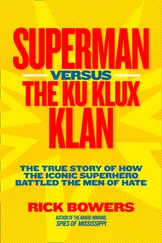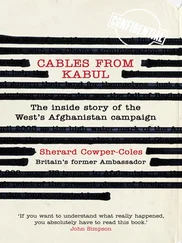Andrew Sorkin - Too Big to Fail - The Inside Story of How Wall Street and Washington Fought to Save the FinancialSystem--and Themselves
Здесь есть возможность читать онлайн «Andrew Sorkin - Too Big to Fail - The Inside Story of How Wall Street and Washington Fought to Save the FinancialSystem--and Themselves» весь текст электронной книги совершенно бесплатно (целиком полную версию без сокращений). В некоторых случаях можно слушать аудио, скачать через торрент в формате fb2 и присутствует краткое содержание. Жанр: Старинная литература, на английском языке. Описание произведения, (предисловие) а так же отзывы посетителей доступны на портале библиотеки ЛибКат.
- Название:Too Big to Fail: The Inside Story of How Wall Street and Washington Fought to Save the FinancialSystem--and Themselves
- Автор:
- Жанр:
- Год:неизвестен
- ISBN:нет данных
- Рейтинг книги:4 / 5. Голосов: 1
-
Избранное:Добавить в избранное
- Отзывы:
-
Ваша оценка:
- 80
- 1
- 2
- 3
- 4
- 5
Too Big to Fail: The Inside Story of How Wall Street and Washington Fought to Save the FinancialSystem--and Themselves: краткое содержание, описание и аннотация
Предлагаем к чтению аннотацию, описание, краткое содержание или предисловие (зависит от того, что написал сам автор книги «Too Big to Fail: The Inside Story of How Wall Street and Washington Fought to Save the FinancialSystem--and Themselves»). Если вы не нашли необходимую информацию о книге — напишите в комментариях, мы постараемся отыскать её.
Too Big to Fail: The Inside Story of How Wall Street and Washington Fought to Save the FinancialSystem--and Themselves — читать онлайн бесплатно полную книгу (весь текст) целиком
Ниже представлен текст книги, разбитый по страницам. Система сохранения места последней прочитанной страницы, позволяет с удобством читать онлайн бесплатно книгу «Too Big to Fail: The Inside Story of How Wall Street and Washington Fought to Save the FinancialSystem--and Themselves», без необходимости каждый раз заново искать на чём Вы остановились. Поставьте закладку, и сможете в любой момент перейти на страницу, на которой закончили чтение.
Интервал:
Закладка:
“I don’t know if there are going to be opportunities. In my experience, it’s been environments like this that do create them, but they don’t necessarily create them right away.”
An opportunity came sooner than he expected.

On Thursday, March 13, Dimon, his wife, and their three daughters were celebrating his fifty-second birthday over dinner at the Greek restaurant Avra on East Forty-eighth Street. Dimon’s cell phone, the one he used only for family members and company emergencies, rang early in the meal, around 6:00 p.m. Annoyed, Dimon took the call.
“Jamie, we have a serious problem,” said Gary Parr, a banker at Lazard who was representing Bear Stearns. “Can you talk with Alan?”
Dimon, in shock, stepped out onto the sidewalk. Rumors had been swirling about Bear for weeks, but the call meant things were more serious than he had realized. Within minutes, Alan Schwartz, the CEO of Bear Stearns, called back and told him the firm had run out of cash and needed help.
“How much?” a startled Dimon asked, trying to remain calm.
“It could be as much as $30 billion.”
Dimon whistled faintly in the night air—that was too much, far too much. Still, he offered to help Schwartz out, if he could. He immediately hung up and called Geithner. JP Morgan couldn’t come up with that much cash so quickly, Dimon told Geithner, but he was willing to be part of a solution.
The following day, Friday, March 14, the Federal Reserve funneled a loan through JP Morgan to Bear Stearns that would end its immediate liquidity concerns and give the firm twenty-eight days to work out a long-term deal for itself. Neither the Fed nor the Treasury, however, was willing to let the situation remain unsettled for that length of time, and over the weekend, they urged Dimon to do a takeover. After a team of three hundred people from JP Morgan installed themselves in Bear’s office, they brought their findings to Dimon and his executives.
By Sunday morning, Dimon had seen enough. He told Geithner that JP Morgan was going to pull out; the problems with Bear’s balance sheet ran so deep as to be practically unknowable. Geithner, however, would not accept his withdrawal and pressed him for terms that would make the deal palatable. They finally arrived at an agreement for a $30 billion loan against Bear’s dubious collateral, leaving JP Morgan on the hook for the first $1 billion in losses.

These final negotiations, not surprisingly, were of intense interest to the Senate Banking Committee. Had JP Morgan, realizing the leverage it had, driven an excessively hard bargain with the government, at taxpayer expense?
Dimon, looking almost regal with his silver hair and immaculately pressed white cuffs peeking out from his suit jacket, sounded neither apologetic nor defensive as he described the events leading up to the Bear deal. “This wasn’t a negotiating posture,” he stated calmly. “It was the plain truth.” In Dimon’s telling, the truth of the matter was clear—he and Geithner were the good guys who had saved the day, and against considerable odds. “One thing I can say with confidence,” he told the committee members. “If the private and public parties before you today had not acted in a remarkable collaboration to prevent the fall of Bear Stearns, we would all be facing a far more dire set of challenges.”
In the end, the day’s testimony produced no smoking guns, no legendary exchanges, no heroic moments. But it introduced to the American public a cast of characters it would come to know very well over the next six months, and it provided a rare glimpse into the small circle of players that sits atop the world of high finance, wobbly though it may have been at the time. The senators were a long way from being able to make up their minds about the Bear deal—how necessary had it really been? And had it really fixed a problem, or merely postponed a greater reckoning?
Of all the members of the Banking Committee, Bunning, with his strong free-markets bias, was the most critical—and perhaps the most prescient. “I am very troubled by the failure of Bear Stearns,” he said, “and I do not like the idea of the Fed getting involved in a bailout of that company… . That is socialism, at least that’s what I was taught.
“And what’s going to happen,” he added ominously, “if a Merrill or a Lehman or someone like that is next?”
CHAPTER FOUR
On the oppressively humid evening of Friday, April 11, 2008, Dick Fuld strode up the steps of the Treasury Building, passing the ten-foot-tall bronze statue of Alexander Hamilton that looms over the south entrance. He had come at the personal invitation of Hank Paulson for a private dinner to mark the end of a G7 summit and the beginning of the annual spring meetings of the International Monetary Fund and the World Bank. The guest list featured a group of the most influential economic policy makers and thinkers, including ten Wall Street CEOs and a number of the world’s leading finance ministers and central bankers, including Jean-Claude Trichet, president of the European Central Bank.
Fuld was feeling fairly optimistic—certainly less despairing than he had been earlier. Lehman’s announcement two weeks before that it would raise $4 billion had stabilized the stock, at least for the moment. The entire market was rallying, buoyed by comments from Lloyd Blankfein, CEO of Goldman Sachs, who had emphatically declared at his firm’s annual meeting that the worst of the credit crisis was likely over. “We’re closer to the end than the beginning,” he said.
That was not to say that the gloom in the financial community had completely lifted. Just that morning Fuld had attended a contentious meeting in downtown Manhattan with Tim Geithner at the New York Fed, imploring him to do something about the short-sellers, who he was convinced were just catching their breath. Erik Sirri, the head of the SEC’s Division of Trading and Markets, repeatedly pressed Fuld for proof of any illegal activity, pleading, “Just give me something, a name, anything.” Fuld, who considered Sirri—a former Harvard Business School professor—to be a free-market zealot with no real-world experience, told him he had nothing concrete. He just knew what he knew.
Tonight, as Fuld was ushered across the checkered squares of black and white marble of the Treasury hallways, he tried to clear his mind and prepared to enjoy himself.
The dinner was being held in the Treasury Cash Room, so named because until the mid-1970s, it was where the public went to exchange U.S. government notes and bonds for cash. Opened in 1869, the room was intended to foster confidence in the new federal paper currency—the “greenback ”—that had been introduced during the Civil War. Today, nearly a century and a half later, that confidence was in short supply.
Fuld had been looking forward to the dinner all week, eager for a chance to talk with Paulson face-to-face. Over the past few weeks, they had spoken several times by phone, but given all that was at stake, meeting in person was essential. It would give Fuld a chance to impress upon the secretary the seriousness of his efforts and to gauge where Lehman really stood with Washington.
Amid the procession of financiers slowly filing into the Cash Room, Fuld noticed an old friend in the corner, John Mack, CEO of Morgan Stanley, one of the few people in the room who understood exactly what Fuld was going through. Of all the CEOs on the Street, Fuld felt closest to Mack; they were the longest-running leaders of the major firms, and they would occasionally dine together with their spouses.
Читать дальшеИнтервал:
Закладка:
Похожие книги на «Too Big to Fail: The Inside Story of How Wall Street and Washington Fought to Save the FinancialSystem--and Themselves»
Представляем Вашему вниманию похожие книги на «Too Big to Fail: The Inside Story of How Wall Street and Washington Fought to Save the FinancialSystem--and Themselves» списком для выбора. Мы отобрали схожую по названию и смыслу литературу в надежде предоставить читателям больше вариантов отыскать новые, интересные, ещё непрочитанные произведения.
Обсуждение, отзывы о книге «Too Big to Fail: The Inside Story of How Wall Street and Washington Fought to Save the FinancialSystem--and Themselves» и просто собственные мнения читателей. Оставьте ваши комментарии, напишите, что Вы думаете о произведении, его смысле или главных героях. Укажите что конкретно понравилось, а что нет, и почему Вы так считаете.












